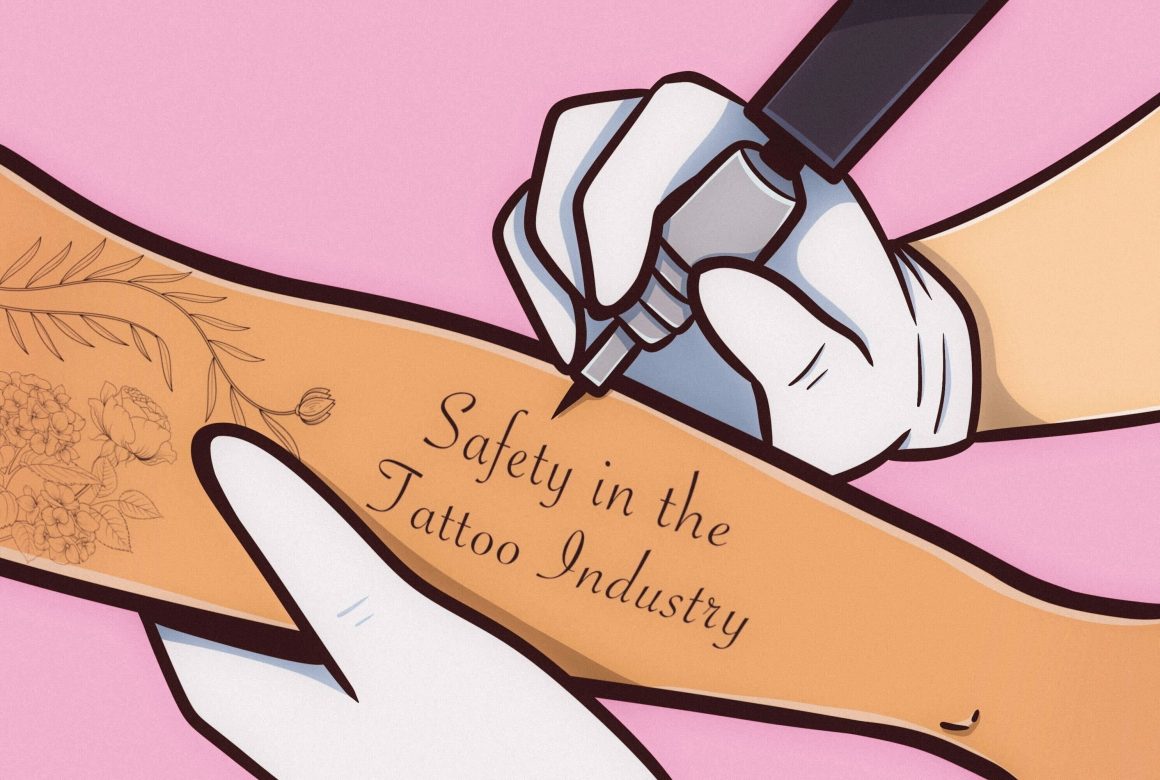
The evolution of safety in the tattoo industry
By Amanda Wilson, September 20 2022—
The art of tattooing has been a sacred practice in many different cultures for thousands of years. In Māori culture, Tā Moko is tattooed to symbolize an individual’s personal and ancestral history. Traditional Thai tattoos are called Sak Yant, and the practice of this style is meant to bestow power, protection, and fortune among their wearers. In the Arctic, Inuit women practice kakinitt and the facial tattoos tunniit symbolise a girl’s transition into womanhood. It’s clear that tattooing has always been an art to express uniqueness within one’s community.
Although the practice is revered in many parts of the world, in Western society tattoos have had a negative reputation since the Catholic Church had announced tattoos as “unchristian,” and during the early years of colonisation. During this time tattoos were seen as a marker to distinguish the civilised and uncivilised — a standard embedded in White, Christian supremacy. Going into the early-modern age tattoos were still seen as dirty, associated with crime and rebellion.
However, within the past 20 years tattooing has become widely accepted and highly popularized. The shift in attitudes towards tattoos is paramount in creating a safer environment within an industry that has been recognized as a space exclusively for dangerous, white men who get tattoos associated with being in jail or gang-related activities. This simply is not the case anymore as society is learning to embrace tattoos as a form of self expression for all, but this also comes with the responsibility of creating a safe and inclusive environment for everyone that exists within such an intimate creative space.
One of the largest concerns with receiving a tattoo is the power dynamic between artist and client — the latter of whom is put in an extremely vulnerable position because the former is using literal needles and other sensitive tools to permanently mark the body. A tattoo artist must be a person that can be trusted with the safety of your body, but when the #MeToo movement began in 2017, many took to calling out predators and holding them accountable for their actions. Although sexual assault and harassment exists in all in industries, the tattoo community is especially vulernable to acts of violence because of its intimate nature. But what is being done to create a safe space amidst such an industry full of uncertainty?
In Calgary, for instance, we can look to Steve Peace — artist and owner of Immaculate Concept tattoo studio, where he has seen the tattoo industry’s commitment to eliminate discrimination and violence grow rapidly since the shop’s opening in 1996. Peace recounts that even just 25 years ago it was extremely difficult for women to break into the tattoo industry due to sexism, but Immaculate Concept had made a point to hire talented women to create more equality in the industry. Now, two-thirds of it’s staff are women with whom Peace continually consults about what policies can be implemented to create a safe and inclusive environment. The latest update to his studio’s tattoo consent form emphasises that the artist is to exclusively perform the task of tattooing and ensuring the clients safety throughout the process — inappropriate behaviour from artists or clients is a zero-tolerance policy. The studio also does continuous work in inclusivity training, with the next workshop being conducted by Skipping Stone, to teach artists how to create an inclusive environment for trans and gender-diverse peoples.
Within the larger tattoo community, Peace will be performing a seminar about consent in the industry at the 2022 Calgary Tattoo & Arts Festival. Due to the fact that the tattoo industry has few mandates in place for client safety — outside of health and sanitisation — he believes that it is imperative that artists and shop owners take on the responsibility of educating themselves on how to create a safe client space. This includes advertising that the shop is a safe environment. All in all, it is impressive to see how the tattoo community has taken it upon themselves to not only reform the reputation of the industry, but also how they have solved issues related to its stigma.
In terms of removing predators from the industry, it is important to report the perpetrators actions. This process can be extremely traumatic, however the group will also be establishing a website where victims may anonymously report predators — which will better protect victims.
When speaking with an artist at Immaculate Concept, Kennedy Knight had explained her initial hesitations when first entering tattooing, and how she had overcome any fears of working in a male-dominated industry.
“I always knew that I wanted to tattoo — luckily a lot of the people that have inspired me have been female artists, different minorities and queer artists,” she said. “That’s something that made me feel more empowered to get into tattoo.”
Knight also emphasizes that one of the most important factors in creating an inclusive tattooing environment is to create communities that are committed to education, and being bold enough to out any predators. In her own practice, basic consent and communication with clients, as well as adapting to needs and sensitivities, is the base of creating a comfortable tattooing experience.
The culture of tattooing has come a remarkable ways within the past few decades, and that is attributed to the people within the tattoo community that know tattooing is not exclusive to White-males — and their commitment to reforming the environment. Tattooing has always been about self-expression and storytelling through creativity. Through holding these values, tattooing will, in time, become recognized purely as a cultural community.
This article is a part of our Voices section.
